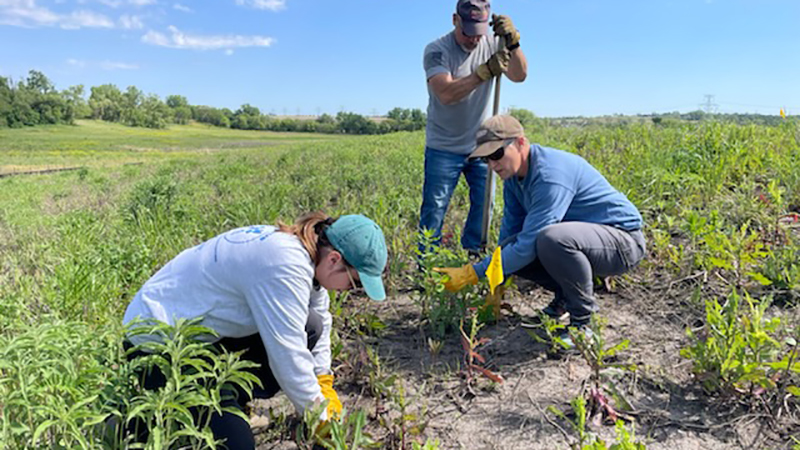Posted: 8/5/2024
Fisheries and wildlife student lands internship after freshmen year
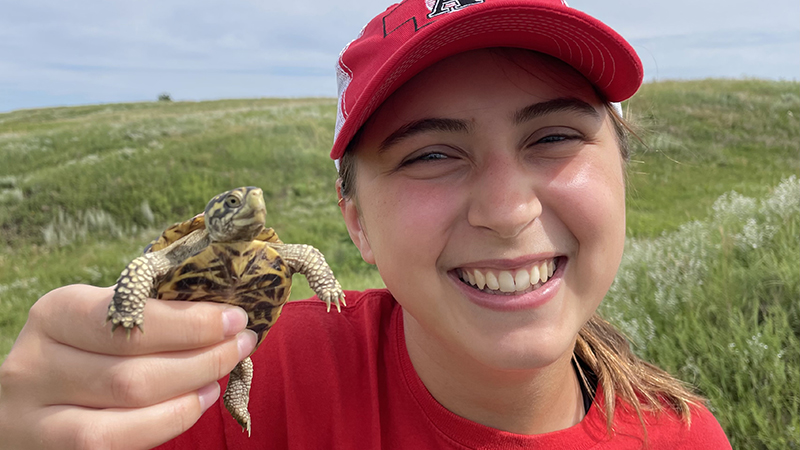
By Ronica Stromberg
Sarah Springer took initiative as a freshman Husker and landed a paid internship this past summer at the Prairie Plains Resource Institute in Aurora.
Now a fisheries and wildlife sophomore, the Aurora native had visited the institute as part of high school science classes. In college, she followed the institute’s social media and saw they had offered internships in past years. She emailed them, telling about herself and asking about internships. The staff invited her in to talk and then acquired funding to support her for 10 weeks, from late May to early August, as a conservation and education intern.
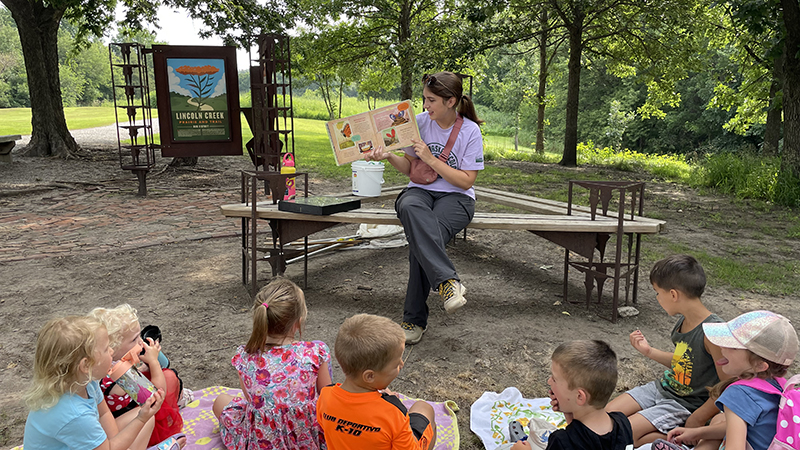
Springer worked at four of the institute’s eight preserves, helping educate the public about Nebraska prairies and the outdoors. She helped with the Young Nebraska Ecologists program for high schoolers, the Youth Naturalist Program for middle schoolers and Summer Orientation About Rivers, two four-day camps for third through sixth graders. She planned Story Time at the Creek, in which she read a nature story to early elementary school students and led them in an activity related to the day’s story.
Springer also helped with prairie restoration and management, collecting seeds and planting them or plugs, and fundraising. She said she had not been looking forward to the fieldwork but found the worksites nice.
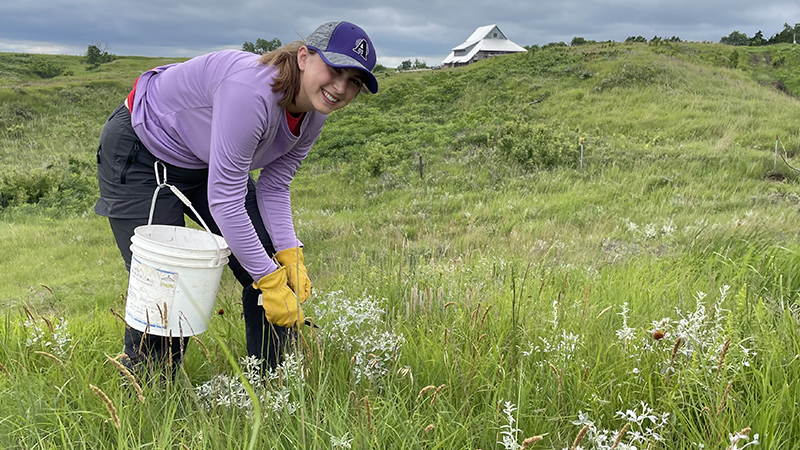
"I found out just how much I love being outside and being in nature in these conservation sites because they're just so beautiful,” she said. "It's not the kind of thing that you would see in Nebraska just driving down the highway. You kind of have to go out of your way to find these sites, but once you're in them, you just realize you can't go back to thinking about the land the same way anymore."
She learned much from the four people on staff at the institute, she said, like that restorations were never “one and done." Prairies can take up to 10 years to become established after a restoration, she said.
"The first several years are often pretty weedy and stuff," she said. "That's not something you would think of if you're planting the native species that are specific to the area, which, again, is kind of like where the education point comes in."
Historically, bison grazed the prairies and Native Americans burned them, keeping invasive species in check. Springer said she enjoyed seeing sites where the institute had restored land with this earlier state in mind.
"It's really been a cool opportunity to see this is what the land originally looked like before hundreds of years ago,” she said. “It's kind of like a really cool piece of history in a way.”
She said the internship also showed her she could not focus solely on one thing, such as a species of animal or plant, but needed to have a broader perspective. Animals like prairie dogs, black-footed ferrets, prairie chickens, burrowing owls and Regal Fritillary butterflies need prairies to live in but they also need food and water, and such needs interplay and build upon one another.
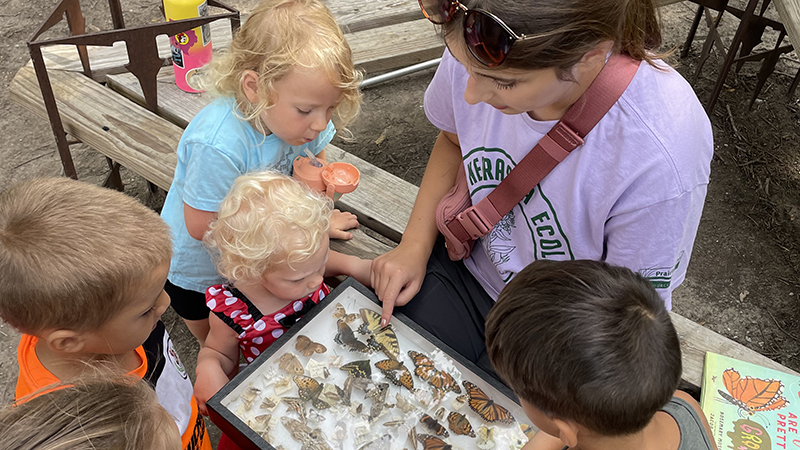
Similarly, prairie plants are adapted to live in harmony with other species around them, so people planting them should plan for diversity, not just one species, she said.
The institute keeps a database of the locations of certain plant species throughout the state. Springer said that seeing that built her interest in taking a class on geographic information system technology.
Going forward, she said she would also like to help with a burn at one of the institute prairies and would like to try internships out of state or take classes out at the Cedar Point Biological Station in western Nebraska.
"I'm happy to learn more," she said. "There's always so much more knowledge that you can take in, and I don't want to limit myself."
She loved the internship experience, she said, and remains open to many different career possibilities in the conservation and wildlife fields. Although the internship did not narrow the directions her future career could take, she said it influenced her another way.
“Prairies will definitely now have a really special place in my heart," she said.
